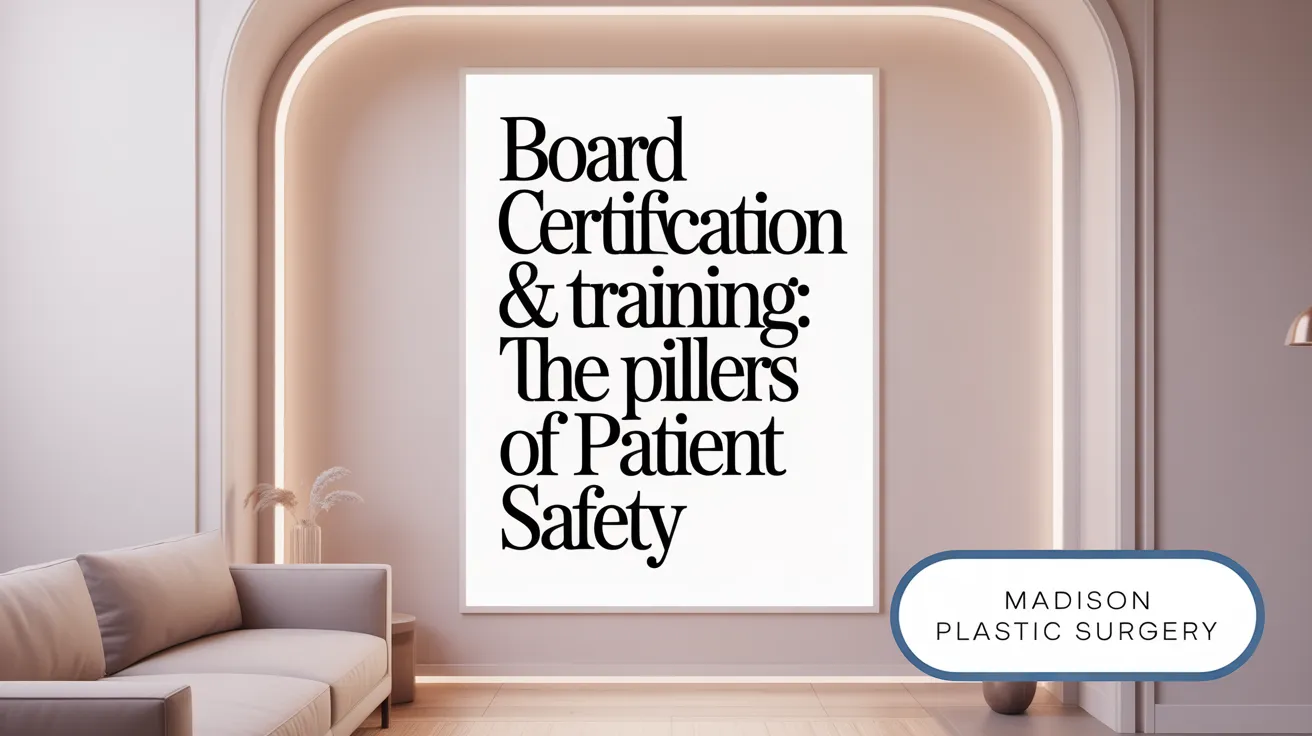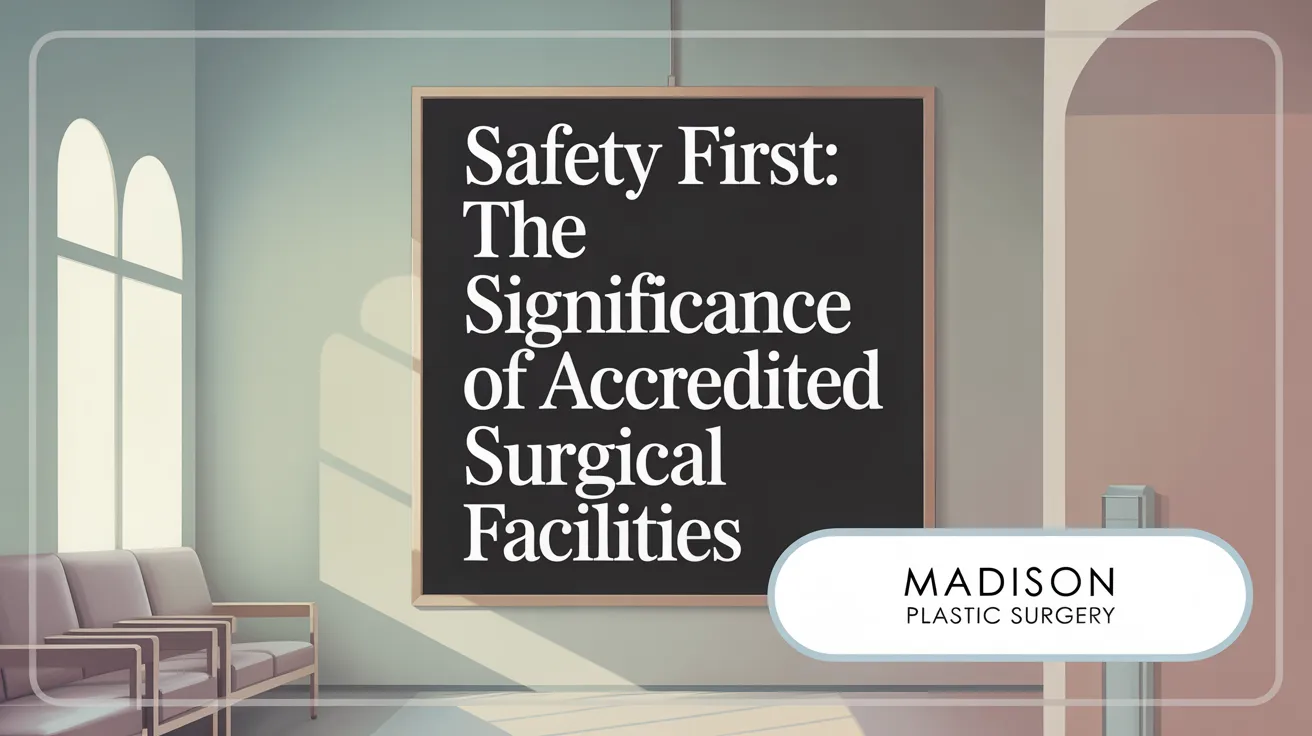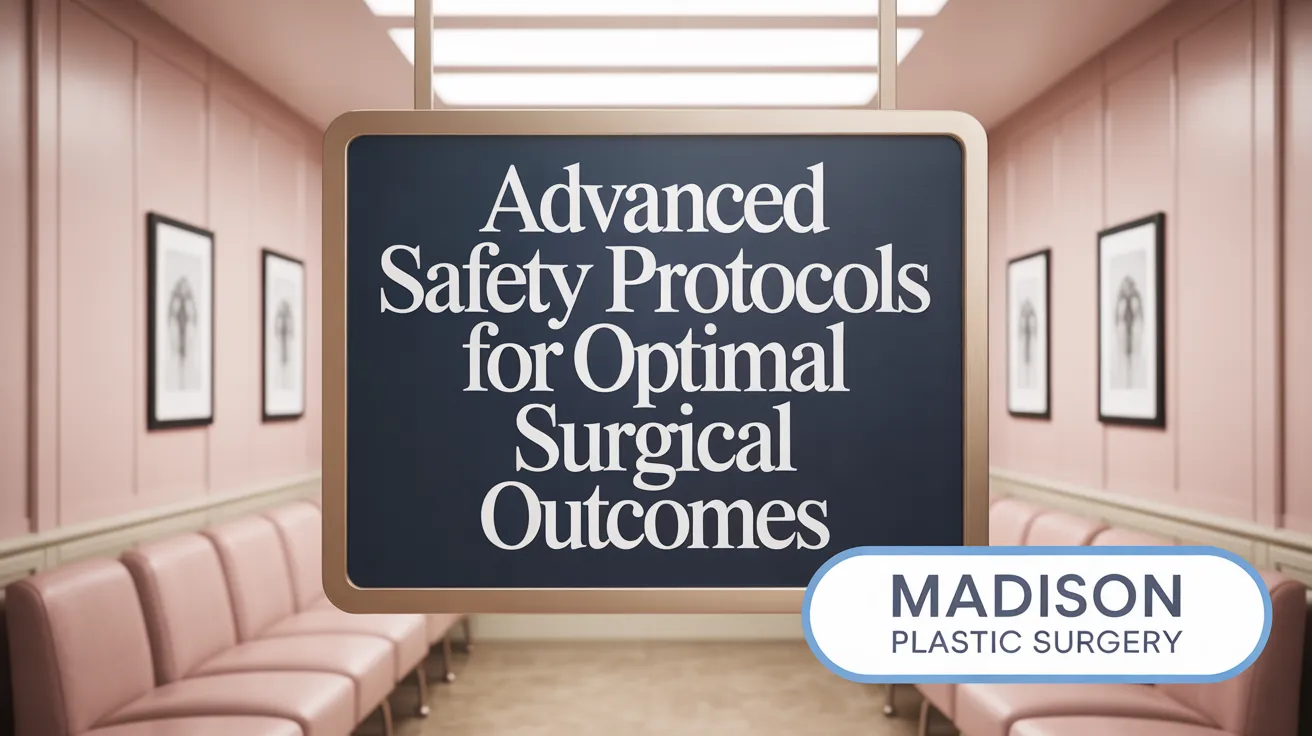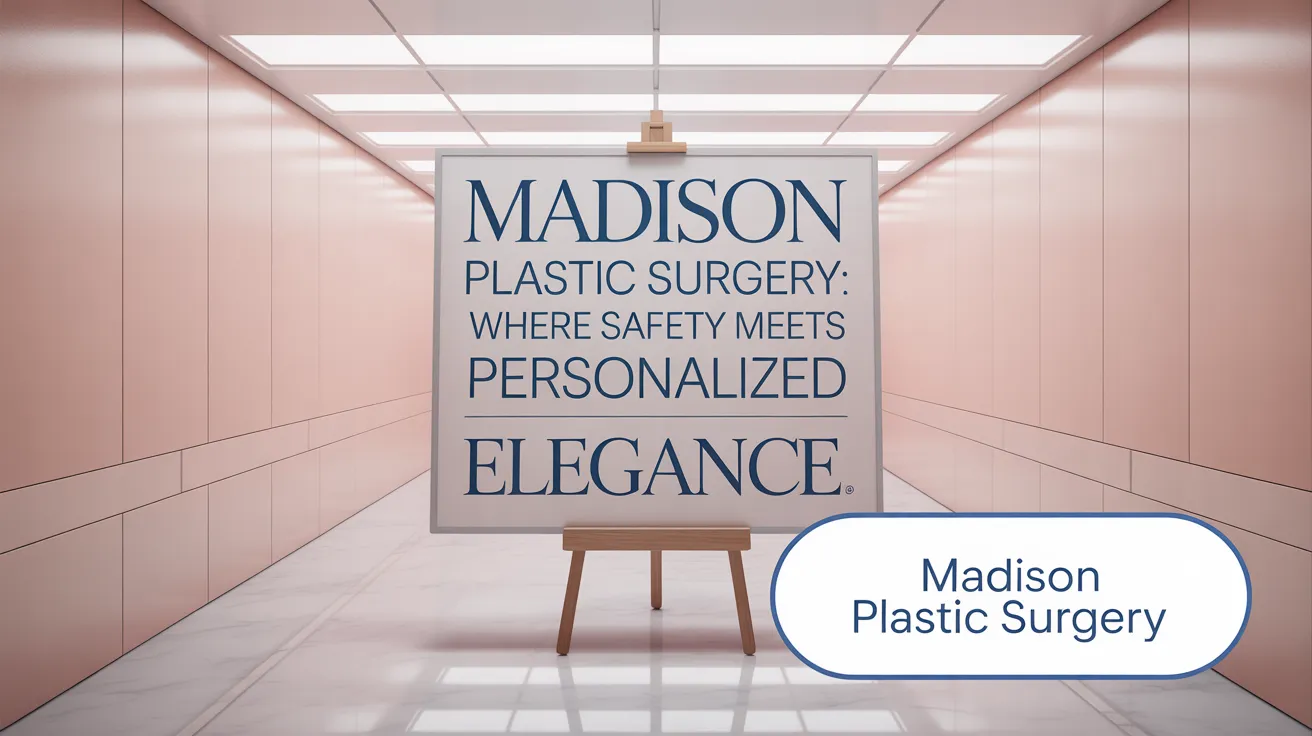Introducing Safety as the Paramount Concern in Cosmetic Surgery
The Importance of Safety in Cosmetic Procedures
In the realm of cosmetic surgery, safety is the foundation upon which all successful outcomes are built. Patients rightly expect rigorous standards that protect not only their physical well-being but also their confidence in the procedure and surgeon. The complexity and delicacy of aesthetic surgeries demand meticulous attention to detail—from preoperative evaluation to the surgical environment and postoperative care. Today, safety encompasses comprehensive protocols, certified surgeon expertise, and advanced facility accreditation.
Increasing Demand for Accredited Practices
With rising patient awareness and demand, accredited surgical facilities have become the benchmark for trusted cosmetic care. Accreditation by reputable organizations such as AAAHC, the Joint Commission, and AAAASF affirms a facility’s commitment to stringent safety, infection control, emergency preparedness, and quality assurance.
These standards obligate continuous staff education, up-to-date equipment, and adherence to federal, state, and local regulations. The best practices incorporate robust protocols preventing complications, including surgical site marking, patient identification, and intraoperative monitoring.
Patient Expectations for Safety and Personalized Care
Today’s discerning cosmetic surgery patients seek more than just technical skill. They expect personalized plans tailored to their unique anatomy and health profile, delivered by board-certified surgeons who prioritize natural results while ensuring maximal safety.
Careful consideration of patient-specific factors like age, comorbidities, and prior surgeries shapes perioperative strategies to minimize risks such as nerve injury, hypothermia, or thromboembolism.
Open, transparent communication about potential risks, recovery timelines, and postoperative support fosters trust and comfort, integral for a positive surgical experience. Ultimately, delivering safety with artistry restores confidence and enhances quality of life for patients pursuing aesthetic transformation.
The Role of Board Certification and Specialized Training in Ensuring Patient Safety

What are the board certification requirements for plastic and facial cosmetic surgeons?
Board certification in plastic surgery requires completion of at least six years of rigorous surgical training after medical school, including a minimum of three years dedicated to plastic surgery residency. Surgeons must pass comprehensive oral and written examinations conducted by recognized bodies such as the American Board of Plastic Surgery (ABPS) certification. Similarly, facial cosmetic surgeons often complete specialized fellowships and are certified by the American Board of Facial Plastic and Reconstructive Surgery (ABFPRS) certification process, reflecting their expertise in facial anatomy and surgical finesse.
How does specialized training support patient safety and outcomes?
Such training ensures that surgeons possess an in-depth understanding of anatomy, aesthetics, and advanced surgical techniques, enabling them to craft natural-looking, balanced enhancements. Continuous education and recertification keep surgeons abreast of innovations and safety protocols. Surgeons affiliated with reputable organizations like the American Society of Plastic Surgeons (ASPS) and AAFPRS Member Surgeons Qualifications adhere to strict standards that prioritize patient well-being and surgical mastery.
Why are surgeon qualifications critical for patient safety?
Surgeon qualifications directly influence surgical precision, complication rates, and overall patient satisfaction. Board certification and fellowship training certify the surgeon’s proficiency, ethical practice, and commitment to patient safety. Qualifications ensure proper preoperative assessments, customized surgical approaches, and meticulous postoperative care, reducing risks associated with cosmetic procedures. Learn more about choosing a board-certified plastic surgeon.
How can patients verify surgeon credentials and memberships?
Patients should confirm that their surgeon is board-certified by bodies such as the American Board of Plastic Surgery or ABFPRS. Membership with professional societies like the American Society of Plastic Surgeons (ASPS) offers additional assurance of ongoing education and adherence to high safety standards. Verification can be performed via official websites or during consultations. Facilities where surgeons operate must also hold accreditation from recognized organizations, reinforcing safety.
How does Madison Plastic Surgery ensure personalized care and safety for its clients?
Madison Plastic Surgery provides personalized consultations assessing each patient’s medical history, physical characteristics, and aesthetic desires. This enables tailored treatment plans designed for optimal safety and natural results. The practice employs stringent Accredited Surgical Facilities led by experienced surgeons. Comprehensive informed consent processes ensure patients fully understand procedure risks and benefits, all within a luxurious boutique environment that fosters individualized attention and confidence.
The Critical Importance of Accredited Surgical Facilities in Cosmetic Procedures

Types of Accreditation for Surgical Facilities
Accredited surgical centers uphold rigorous safety and quality standards, maintained by reputable agencies including AAAHC (Accreditation Association for Ambulatory Health Care), AAAASF (American Association for Accreditation of Ambulatory Surgery Facilities), The Joint Commission, and Quad A (Quality Association of Ambulatory Surgery Centers). Each organization mandates strict evaluations of surgical environments, personnel qualifications, equipment, and emergency readiness.
Safety Protocols in Accredited Facilities
Facilities accredited by these bodies implement comprehensive safety protocols encompassing Universal Protocol for surgical safety, Time out procedure in cosmetic surgery, Preoperative patient identification, Operative site marking, Patient positioning in cosmetic procedures, Preventing brachial plexus injury in breast surgery, Protecting eyes during prone positioning, Preventing corneal abrasion and retinal ischemia, Perioperative care for elderly patients, Temperature management to prevent hypothermia, Managing osteoporosis in surgery patients, Perioperative management for obese patients, Thromboprophylaxis in massive weight loss patients, Nutritional and laboratory evaluation before body contouring, Operative planning for prolonged cosmetic surgery, Use of heavy-duty support surfaces, Monitoring core temperature during surgery, Minimizing blood loss in cosmetic procedures, Tumescent technique for blood loss control, Intraoperative monitoring for patient safety, Postoperative pain management, Safe transfer from operative table, Early mobilization after surgery, Thromboembolism prophylaxis post-surgery, Maintaining normothermia to prevent wound infection. These protocols ensure proper patient positioning, prevention of surgical errors, and intraoperative monitoring — all vital to minimize complications and promote successful outcomes.
Sanitation and Emergency Preparedness
Sanitation standards in accredited centers meet or surpass federal regulations, including board-certified plastic surgeon, American Board of Plastic Surgery certification, national accreditation for plastic surgery practices, American Society of Plastic Surgeons standards, sterilization and infection control measures, hand hygiene protocols, surface disinfection standards, proper sharps disposal, use of personal protective equipment (PPE), emergency preparedness plans, hospital transfer protocols, postoperative complication management, CDC infection prevention practices, patient safety commitment, Lucas Center compliance with sterilization standards, Dr. Lucas board certification since 2002, surgeries at Parkwest Medical Center, Parkwest Medical Center safety reputation. Emergency preparedness is meticulously planned, guaranteeing availability of life-saving medications and equipment, presence of ACLS-certified staff, and established protocols for rapid hospital transfers if necessary.
Advantages of Accredited Surgery Centers
Choosing an accredited facility significantly lowers risks of infection, anesthesia complications, and adverse events. These centers maintain ongoing quality management, regularly undergo external inspections, and provide documented operating privileges for surgeons. The mortality rate in accredited ambulatory centers is notably low, less than one in 57,000 procedures, reflecting exceptional safety performance compared to non-accredited settings as detailed in Accredited Facilities for Plastic Surgery.
Role of Surgical Facility Accreditation at Madison Plastic Surgery
Madison Plastic Surgery operates within accredited facilities to demonstrate an unwavering commitment to patient safety and excellence. This ensures patients benefit from modern, sterile environments staffed by qualified professionals trained in the latest safety standards. Accreditation supports personalized care with emergency readiness, fostering confidence for patients seeking luxurious and secure cosmetic enhancements.
Advanced Perioperative and Intraoperative Safety Measures Employed by Expert Surgeons

What Universal Safety Protocols Are Essential in Cosmetic Surgery?
Expert cosmetic surgeons strictly adhere to Universal Protocol for surgical safety to prevent critical surgical errors. This involves thorough Preoperative patient identification, precise Operative site marking, and a mandatory Time out procedure in cosmetic surgery moment to confirm the correct patient, procedure, and site before incision. These protocols are foundational for ensuring Patient Safety in Plastic Surgery in outpatient and office-based cosmetic surgery environments.
How Is Patient Positioning Managed to Prevent Nerve and Vascular Injuries?
Meticulous Patient positioning in cosmetic procedures prevents complications such as nerve damage and pressure injuries. For instance, during breast surgeries, arm abduction is limited to less than 90 degrees to avoid Preventing brachial plexus injury in breast surgery. Protecting pressure points and cushioning vulnerable areas reduce risks of pressure necrosis and vascular compromise. Protecting eyes during prone positioning against Preventing corneal abrasion and retinal ischemia is paramount, especially when patients are supine or prone; methods include eyelid taping and ophthalmic lubricant use.
What Specialized Perioperative Care Is Required for Elderly and High-Risk Patients?
Patients over 65 years old or with comorbidities such as osteoporosis receive enhanced Perioperative care for elderly patients and Managing osteoporosis in surgery patients. This includes careful monitoring and management to prevent hypothermia, a condition that significantly heightens risks for cardiac events and wound infections. Temperature management to prevent hypothermia and tailored positioning and supportive measures address the unique vulnerabilities of these populations, optimizing outcomes.
How Are Thromboprophylaxis and Temperature Effectively Managed?
Increased vigilance and customized protocols guide Thromboprophylaxis in massive weight loss patients, especially for obese or massive weight loss patients prone to venous thromboembolism. Temperature regulation during long procedures employs Use of heavy-duty support surfaces and continuous Monitoring core temperature during surgery to avoid hypothermia-related coagulopathy and infection risks.
What Measures Minimize Blood Loss and What Intraoperative Monitoring Ensures Safety?
Advanced surgical techniques, including the Tumescent technique for blood loss control, help minimize intraoperative blood loss. Continuous vital sign monitoring and vigilant anesthesia care are integral, maintaining hemodynamic stability throughout the procedure. These efforts reduce complications and support rapid, natural-looking aesthetic results emphasized by Board-Certified Plastic Surgeons.
What Are the Critical Elements of Postoperative Care?
Expert postoperative protocols emphasize Safe transfer from operative table and effective Postoperative pain management strategies that promote early mobilization. Ongoing Thromboembolism prophylaxis post-surgery, temperature control, and monitoring for complications such as infection or excessive bleeding form a comprehensive safety net. Open communication channels enable timely intervention, reinforcing patient confidence and optimal recovery as highlighted in Plastic surgeon recovery tips.
Madison Plastic Surgery’s Comprehensive Range of Advanced Aesthetic Treatments
What types of advanced surgical and non-surgical aesthetic treatments does Madison Plastic Surgery offer?
Madison Plastic Surgery provides a broad spectrum of sophisticated aesthetic procedures meticulously crafted to highlight natural beauty with refined results.
Surgical options include expertly performed facelifts, rhinoplasty, and breast augmentation. These procedures are customized to the patient's unique facial and body anatomy, prioritizing balanced, harmonious enhancements that preserve individuality.
For non-surgical rejuvenation, the practice offers neuromodulators such as Botox® and Dysport™ to soften dynamic wrinkles gracefully. Their arsenal of soft tissue fillers, including Juvéderm® and Radiesse®, replenishes volume and smooths static lines, delivering subtle yet impactful facial contouring.
Cutting-edge skin treatments like laser resurfacing and advanced skin tightening technologies further improve texture, tone, and pigment irregularities, promoting a youthful complexion with minimal downtime.
Ultherapy®, a pioneering non-invasive lifting technique offered here, harnesses focused ultrasound energy to stimulate collagen remodeling and lift lax skin naturally without surgery.
Underpinning all treatments is a firm commitment to patient safety, with a focus on personalized care plans that align with each individual's aesthetic goals and medical profile. The result is consistently natural-looking outcomes that enhance confidence and personal elegance.
This comprehensive service portfolio distinguishes Madison Plastic Surgery as a leader in providing refined, personalized, and safe aesthetic solutions.
What Sets Madison Plastic Surgery Apart: Commitment to Safety, Personalization, and Elegance

What distinguishes Madison Plastic Surgery's approach to cosmetic procedures from other practices?
Madison Plastic Surgery offers a boutique environment where patient comfort and individualized attention are paramount. Unlike larger, impersonal clinics, Madison provides a tailored experience focused on understanding each client's unique goals and anatomical nuances.
The practice achieves refined, natural-looking results through the application of advanced, evidence-based surgical and non-surgical techniques. Emphasizing subtlety and harmony, the surgeons prioritize enhancing the patient’s inherent beauty rather than dramatic changes.
Patient safety is a foundational priority. Madison Plastic Surgery adheres strictly to rigorous safety protocols, utilizing board-certified plastic surgeons and operating exclusively in accredited surgical facilities. The clinic provides thorough informed consent discussions and maintains ongoing communication throughout preoperative, operative, and postoperative phases.
Follow-up care is comprehensive and continuous, ensuring each patient’s recovery is carefully monitored and any concerns promptly addressed. This dedication to meticulous long-term care supports optimal outcomes and patient confidence.
Compared with other practices, Madison distinguishes itself by blending surgical mastery with a personalized, luxury-driven experience. This includes a well-curated patient journey from consultation to recovery, emphasizing not only superior results but also emotional reassurance and trust.
In summary, Madison Plastic Surgery uniquely combines artistry, precision, and unwavering commitment to patient safety in plastic surgery, and personalized care, making it the premier choice for clients seeking elegant, natural enhancements in a secure, supportive environment.
Elevating Patient Safety Through Accreditation and Expertise
Selecting Board-Certified Surgeons and Accredited Facilities
Opting for a plastic surgeon certified by the American Board of Plastic Surgery ensures extensive surgical training and adherence to rigorous safety protocols. Accredited facilities, recognized by organizations such as AAAHC and The Joint Commission, maintain stringent standards for sterilization, emergency preparedness, and skilled staffing—factors essential for minimizing risks during cosmetic procedures.
Comprehensive Safety Measures and Tailored Patient Care
Effective patient safety extends beyond certification, involving detailed preoperative evaluations, meticulous intraoperative monitoring, and personalized postoperative care. This holistic approach addresses individual risk factors such as age and medical history, ensuring tailored positioning, anesthesia safety, and vigilant prevention of complications like hypothermia and thromboembolism.
Madison Plastic Surgery’s Commitment to Excellence
At Madison Plastic Surgery, patient protection is paramount. Their team combines board-certified expertise with accredited facility standards to deliver natural-looking, refined outcomes. Emphasizing transparent communication, advanced safety protocols, and compassionate care, Madison Plastic Surgery exemplifies the highest standards in cosmetic surgery safety and patient satisfaction.
